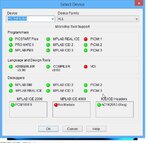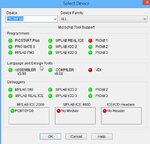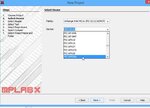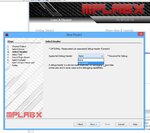TrevorH
Newbie level 3
Hi
I am a very new Hobbyist of PIC so please go easy on me. I am using a PIC16f628A, Pickit2, MPLAB X v2.20, and PICkit2 v2.61
I am starting with the usual beginner tutorials and the obligatory "flashing LED" project which are fine and understand. I have managed to write the assembly, build the project, use the PICkit2 software to program the PIC and hey presto the LED flashes, etc. The Debug in MPLAB was working fine up until about a week ago and since then I have not been able to use it, however the build still works and I can change the PIC without a problem, its just the Debug that I keep getting an error.
the error is:
Error - section 'dbgD2' can not fit the absolute section. Section 'dbgD2' start=0x00000165, length=0x0000000b
I have searched online for many many hours and cannot figure out what I've done.
Can anyone point me in the right direction so I can get the debug to work again.
Thanks in advance.
Trevor
I am a very new Hobbyist of PIC so please go easy on me. I am using a PIC16f628A, Pickit2, MPLAB X v2.20, and PICkit2 v2.61
I am starting with the usual beginner tutorials and the obligatory "flashing LED" project which are fine and understand. I have managed to write the assembly, build the project, use the PICkit2 software to program the PIC and hey presto the LED flashes, etc. The Debug in MPLAB was working fine up until about a week ago and since then I have not been able to use it, however the build still works and I can change the PIC without a problem, its just the Debug that I keep getting an error.
the error is:
Error - section 'dbgD2' can not fit the absolute section. Section 'dbgD2' start=0x00000165, length=0x0000000b
I have searched online for many many hours and cannot figure out what I've done.
Can anyone point me in the right direction so I can get the debug to work again.
Thanks in advance.
Trevor



